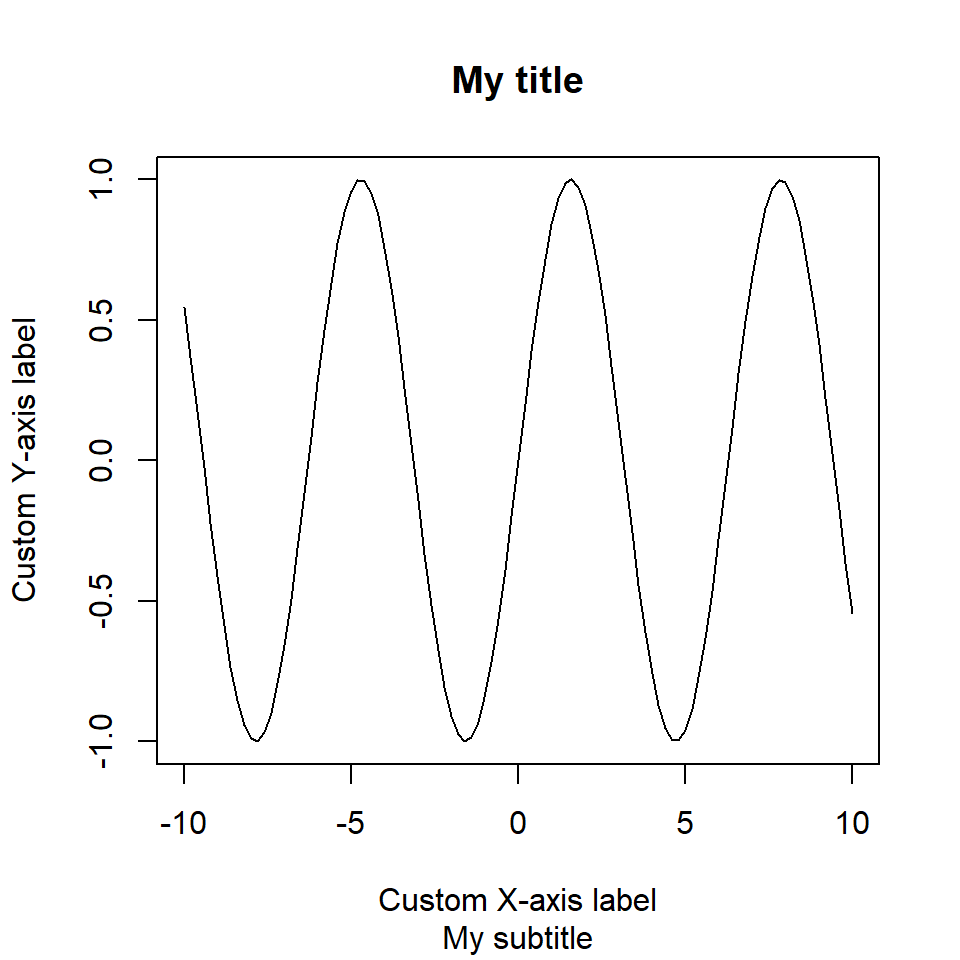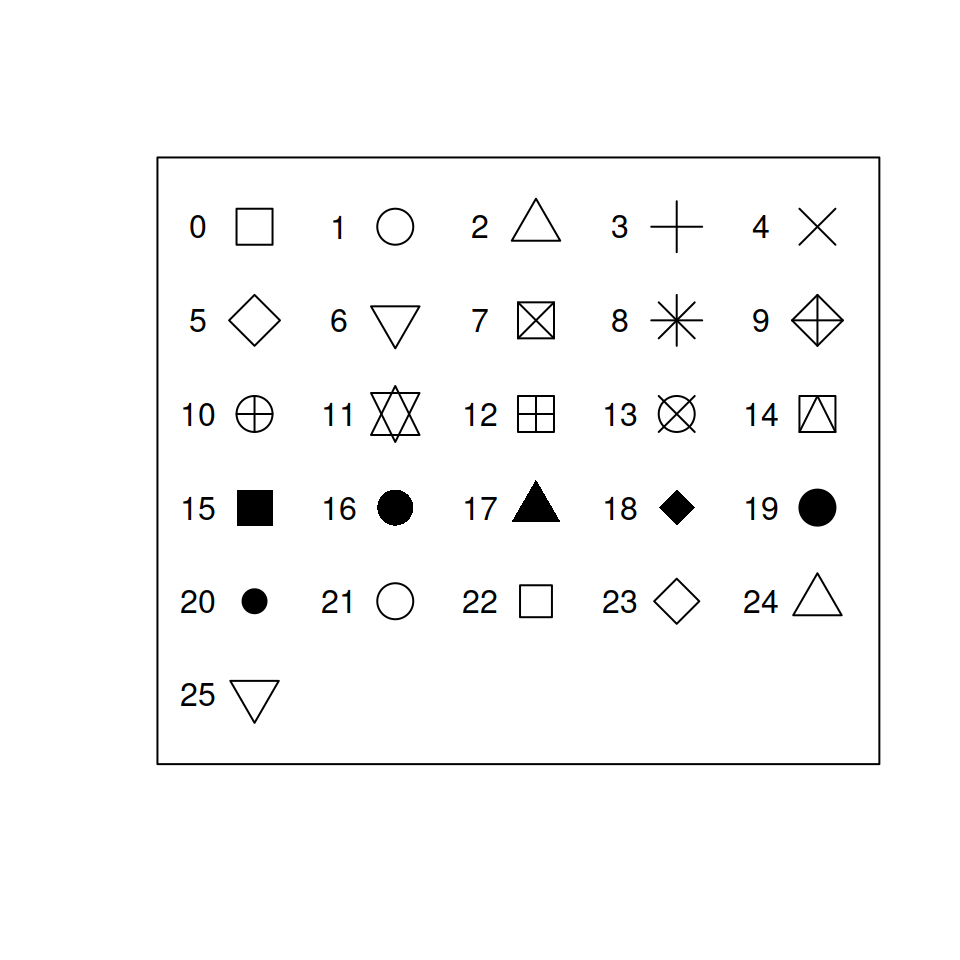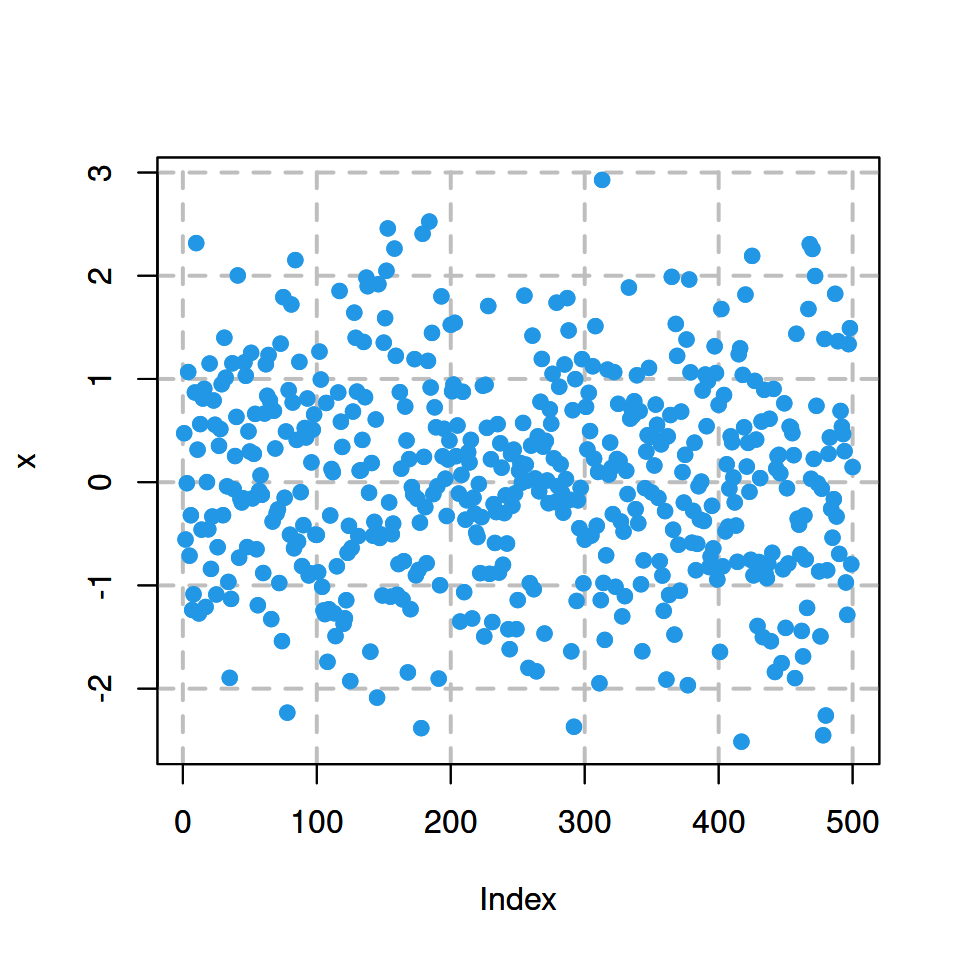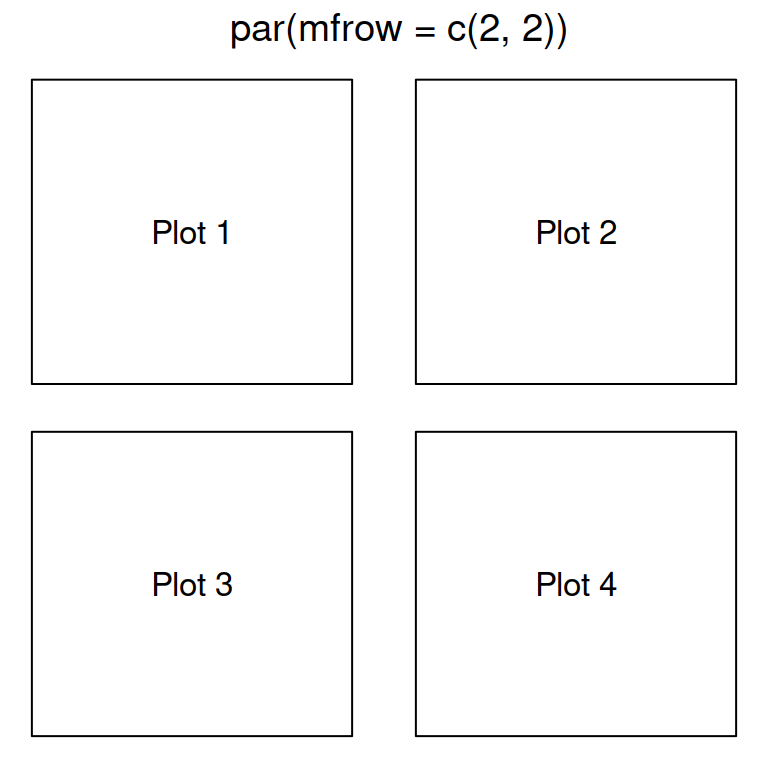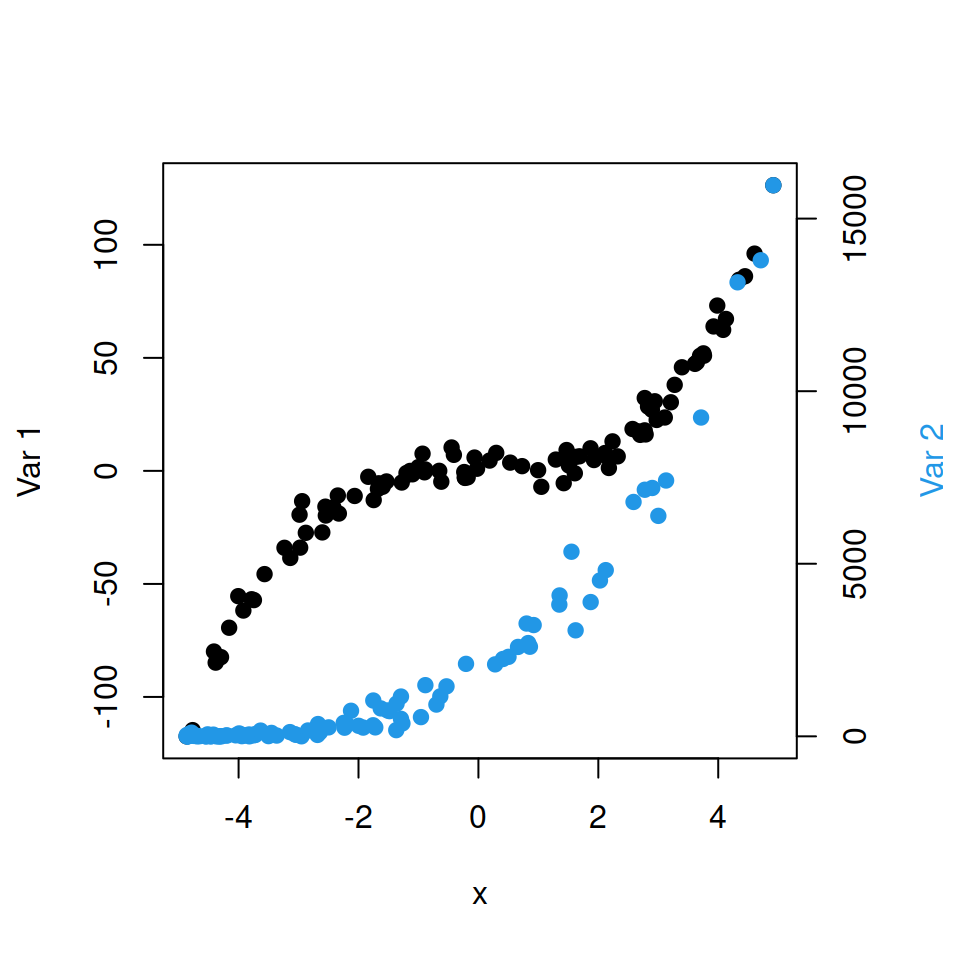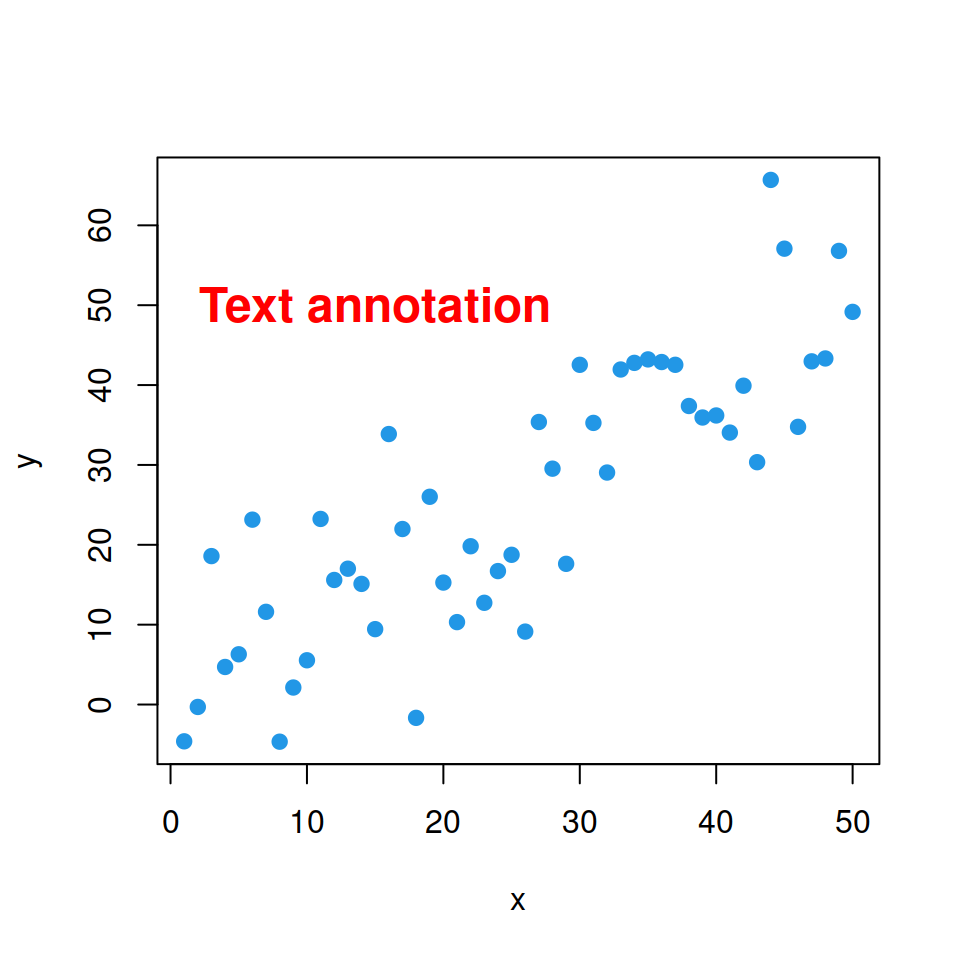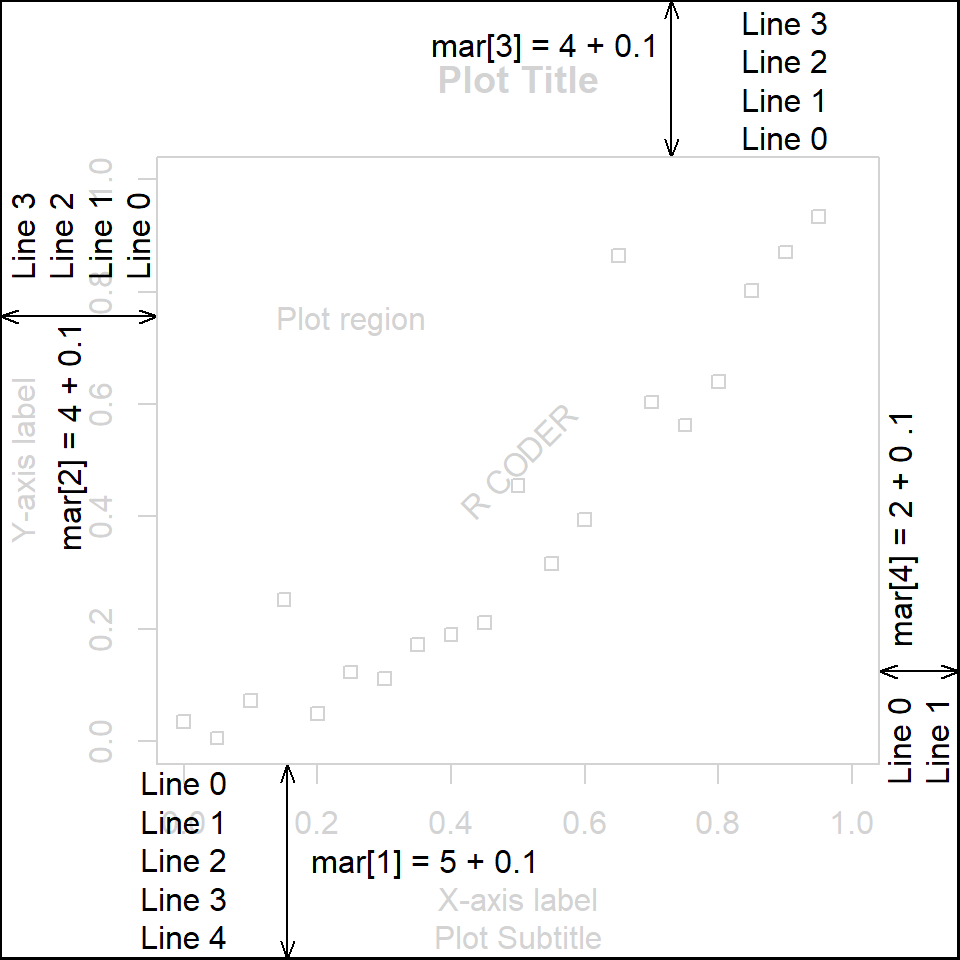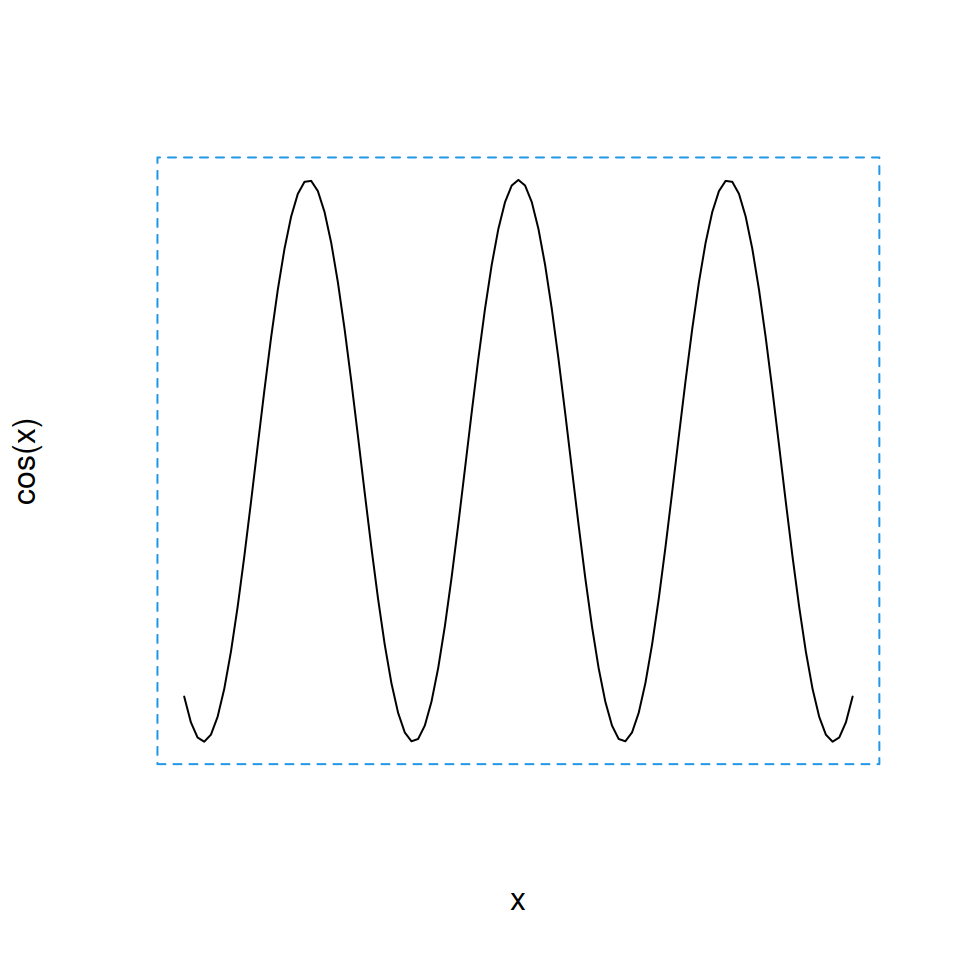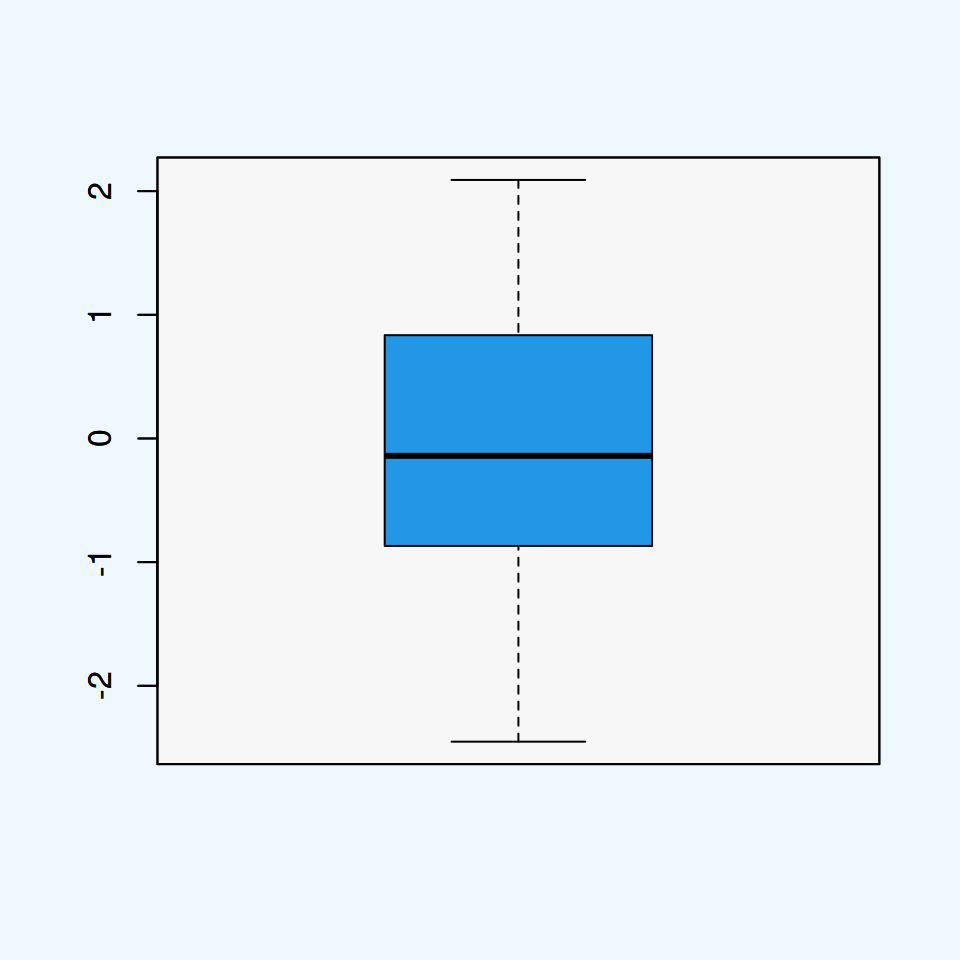Lines (or curves) can be customized in R in several ways with different graphical parameters. The graphical parameters of this guide can be used with several functions such as lines, curve, matlines, segments, abline and arrows.
Line types
Built-in types
There exist seven styles, specified by either their integer or character string. The default value is 1 ("solid").
String types
You can also specify patterns with strings of 2, 4, 6, or 8 characters (hexadecimal, characters, 1–9 and a–f) to create custom lines.
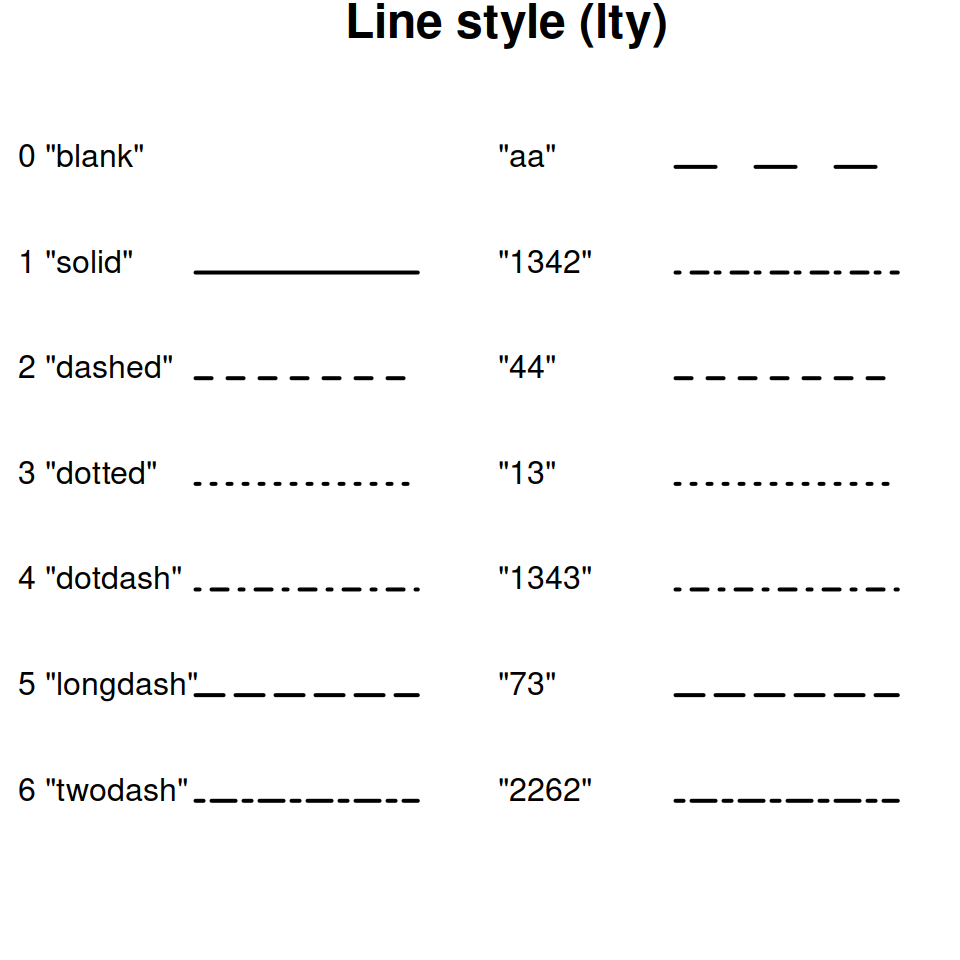
👉 Example: "55" creates a pattern of 5 units followed by 5 blank units. Units are proportional to lwd.
Line widths
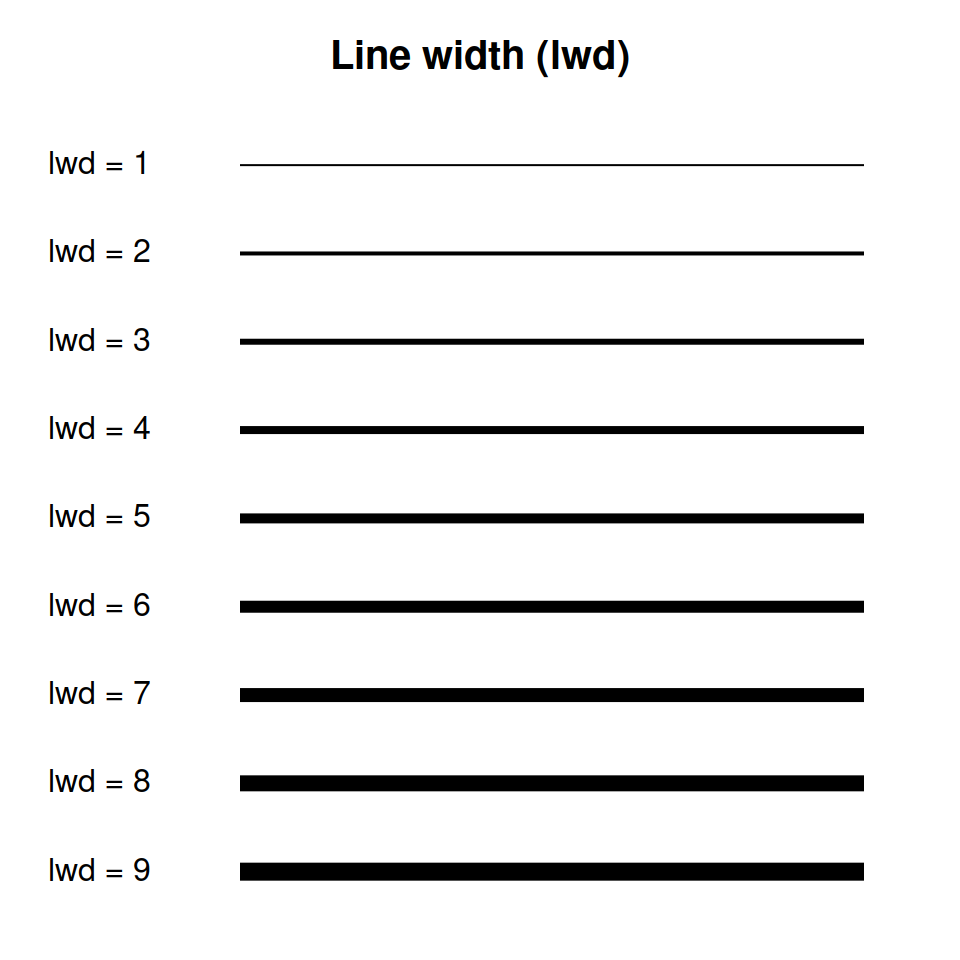
The width of the lines can be set using the lwd argument. The default value is 1.
You can set any positive value in order to create the desired line.
Line plot types
When creating a plot with the plot or matplot or when adding new lines with lines and matlines functions you can create different types of line plots with the type argument. Defaults to "p" (points).
| Type | Description |
|---|---|
| “p” | Points |
| “l” | Lines |
| “b” | Lines and points |
| “c” | Lines without the part of the points |
| “o” | Lines and points (overplotted) |
| “h” | Histogram-like |
| “s” | Stairs (first line horizontal) |
| “S” | Stairs (first line vertical) |
| “n” | No plotting |
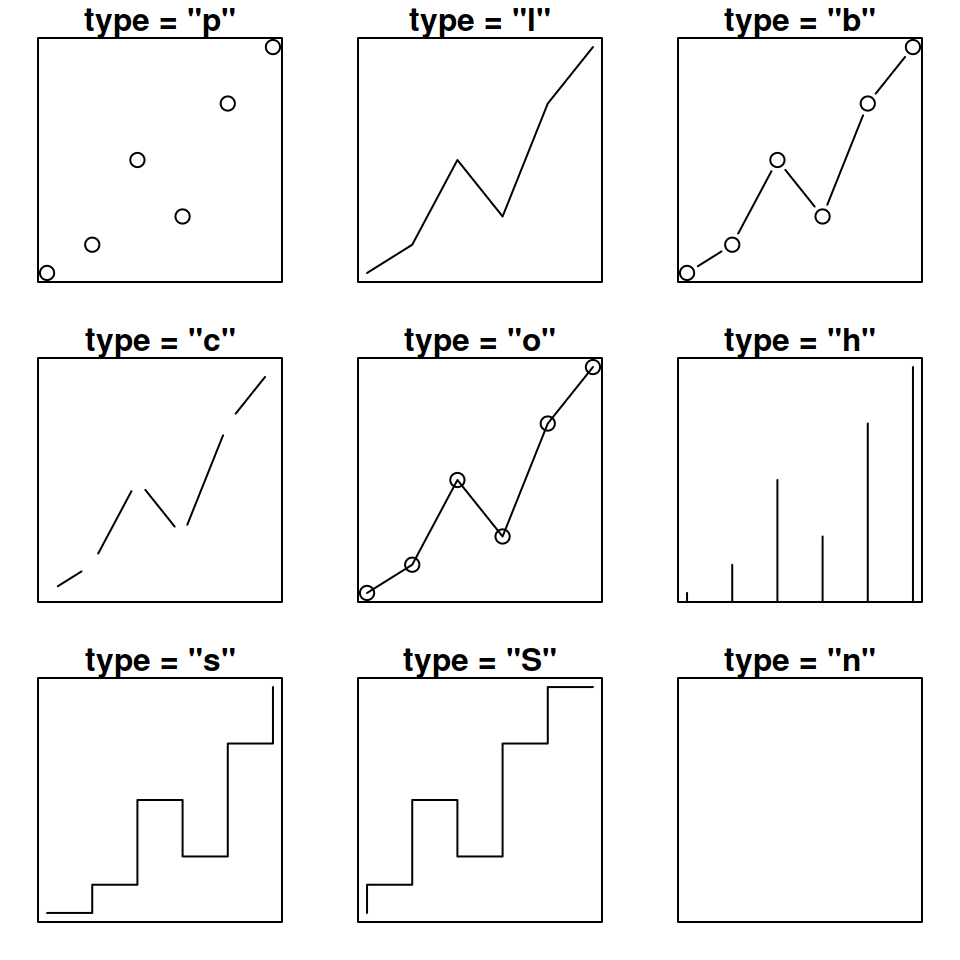
Line colors
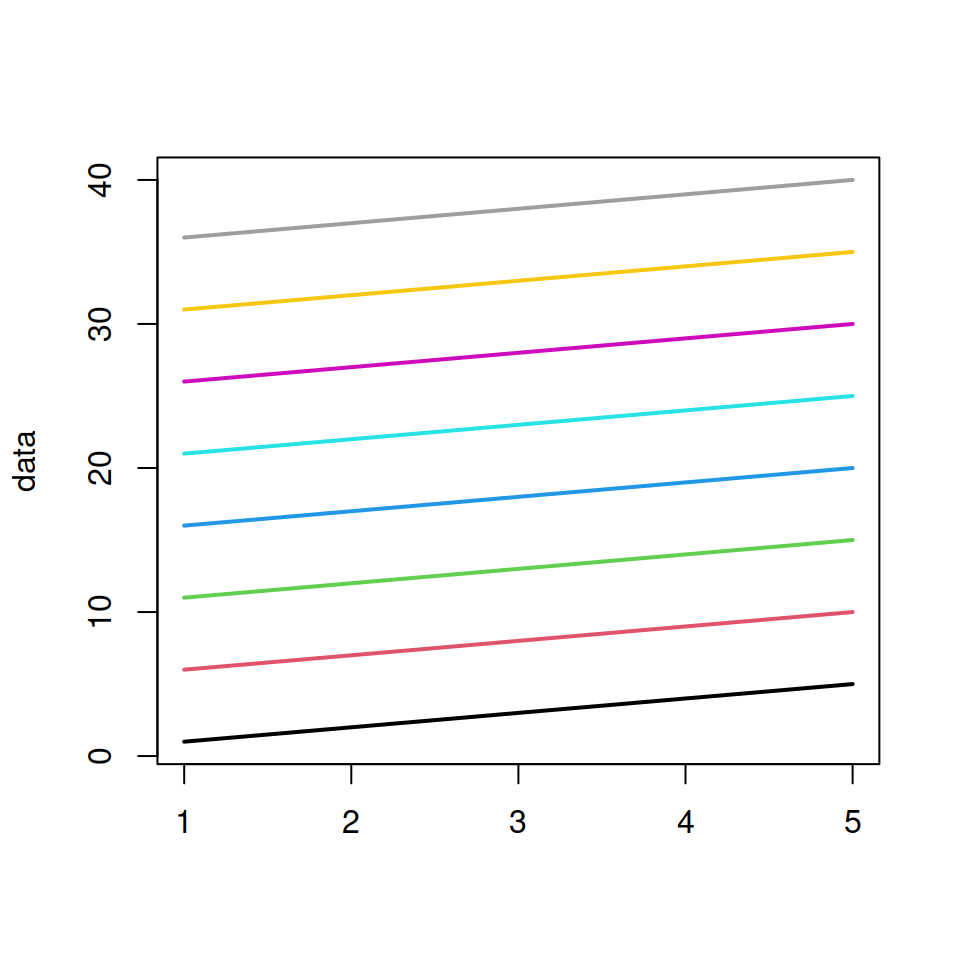
You can customize the colors of the lines with the col argument. See the colors section to know more about the available colors.
data <- matrix(1:40, ncol = 8)
matplot(data, type = "l",
col = 1:10, lty = 1, lwd = 2)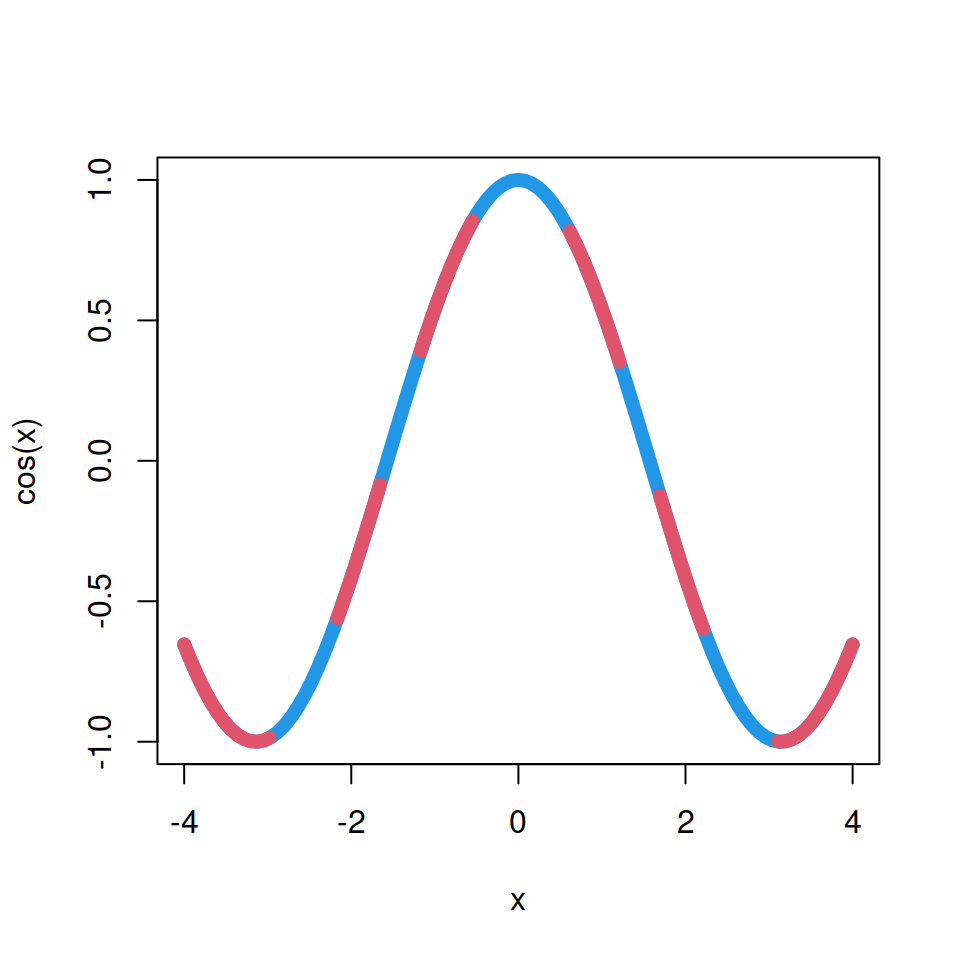
Patterns
💡 Tip: combine line types and colors to create custom patterns.
curve(cos, -4, 4, col = 4, lwd = 7,
lty = 1)
curve(cos, -4, 4, col = 2, lwd = 7,
lty = "aa",
add = TRUE)Line end and join style
lend
There are three different line end styles, that can be selected with the lend argument by either their integer (0, 1, 2) or character string ("round", "butt" and "square", respectively). Defaults to 0.
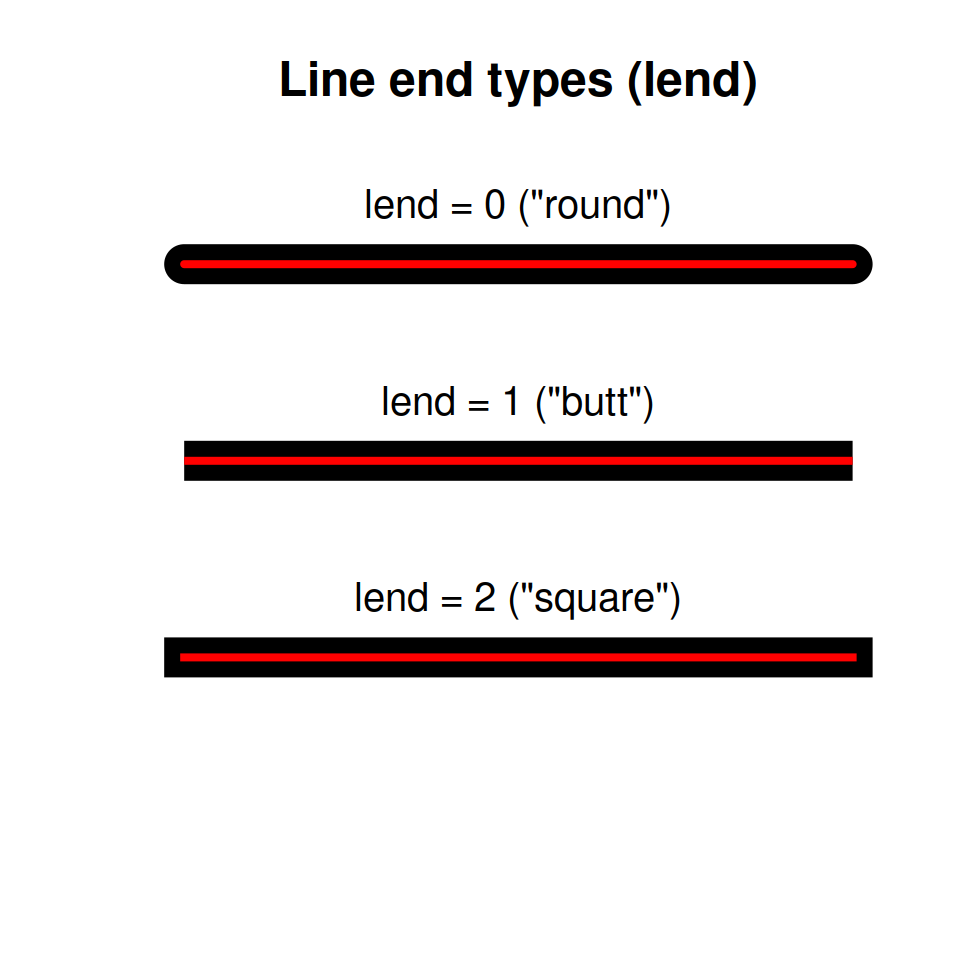
ljoin
You can also select between different line join styles with the ljoin argument, which possible values are 0 or "round" (default), 1 or "mitre" and 2 or "bevel".
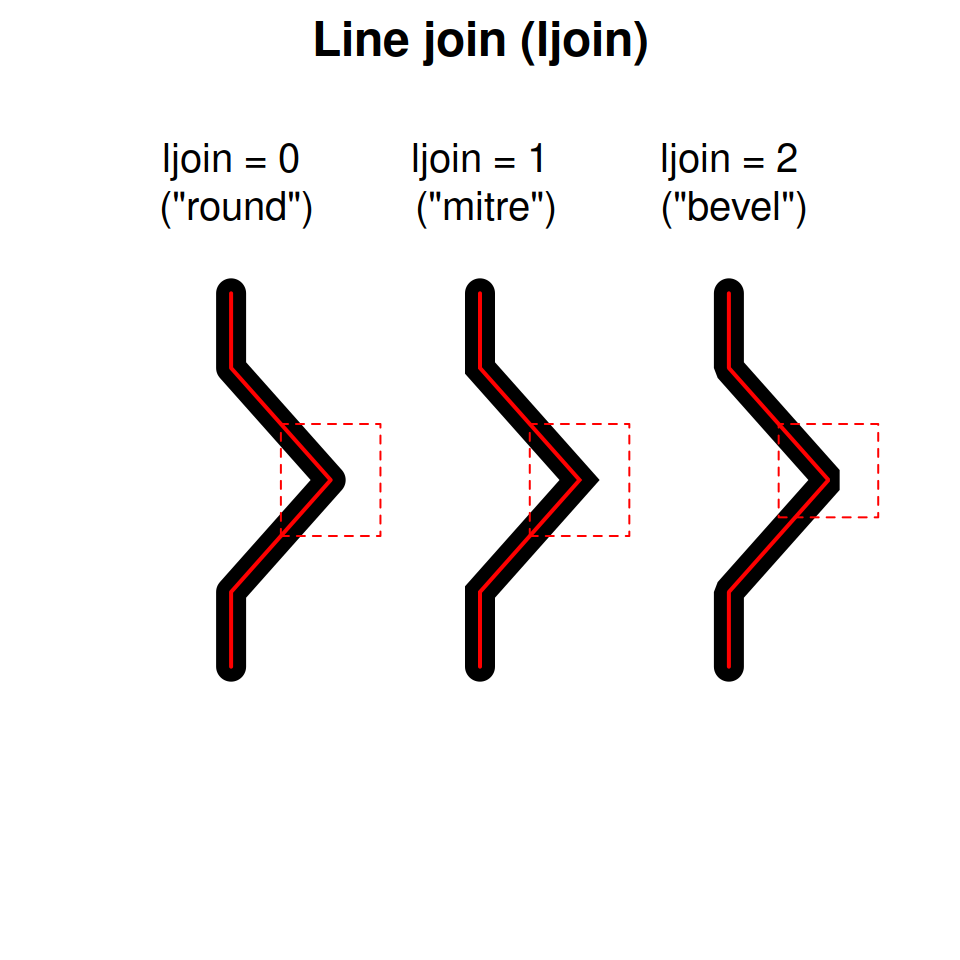
Note that the red lines represent the actual start and end of the data.

